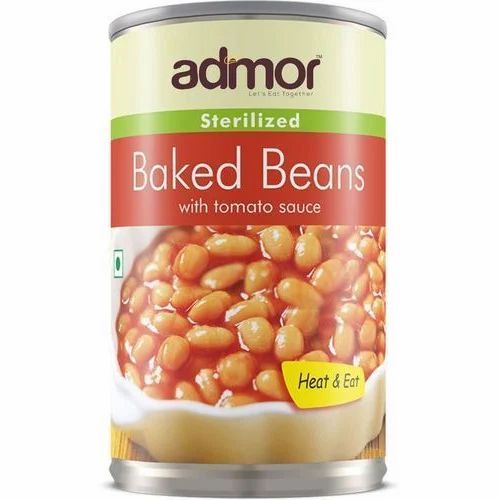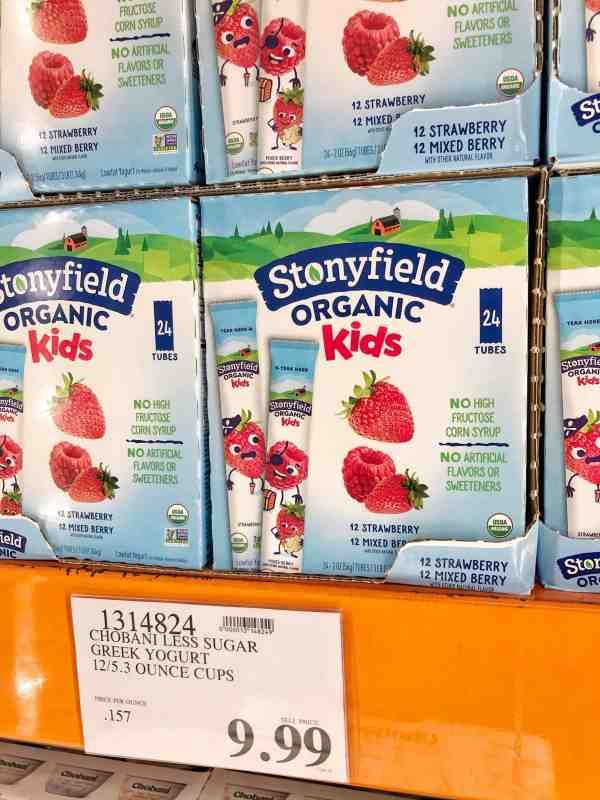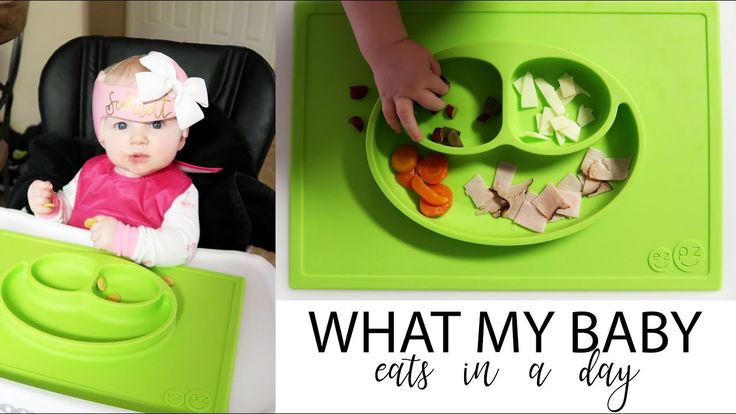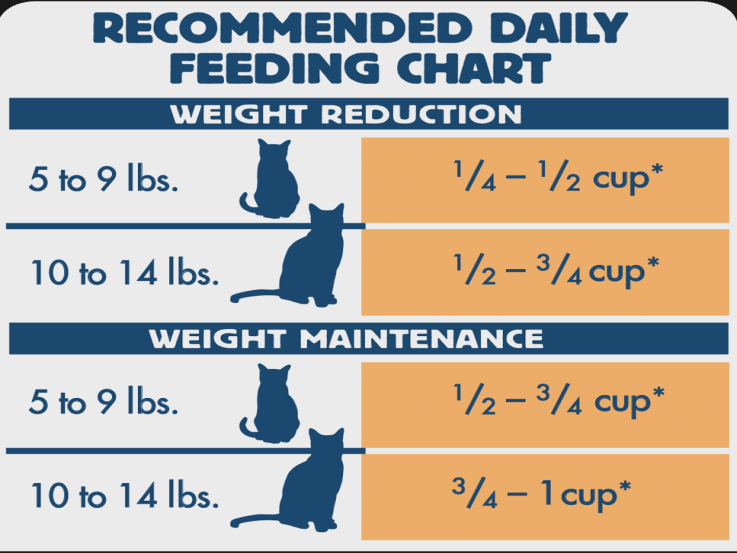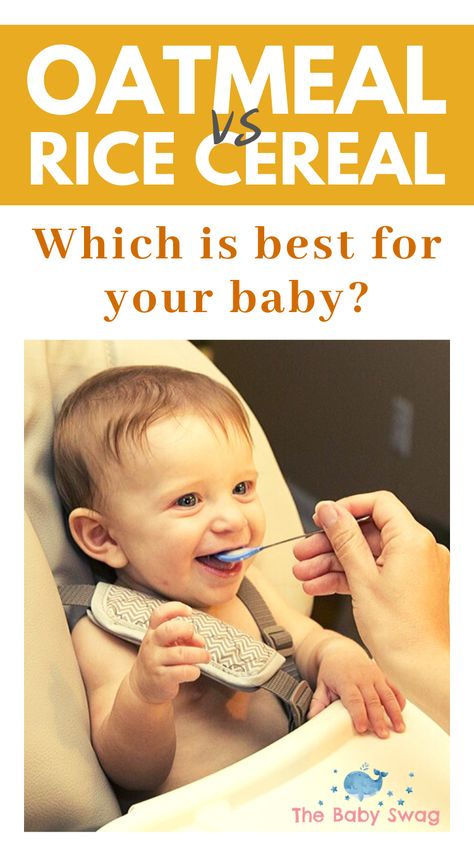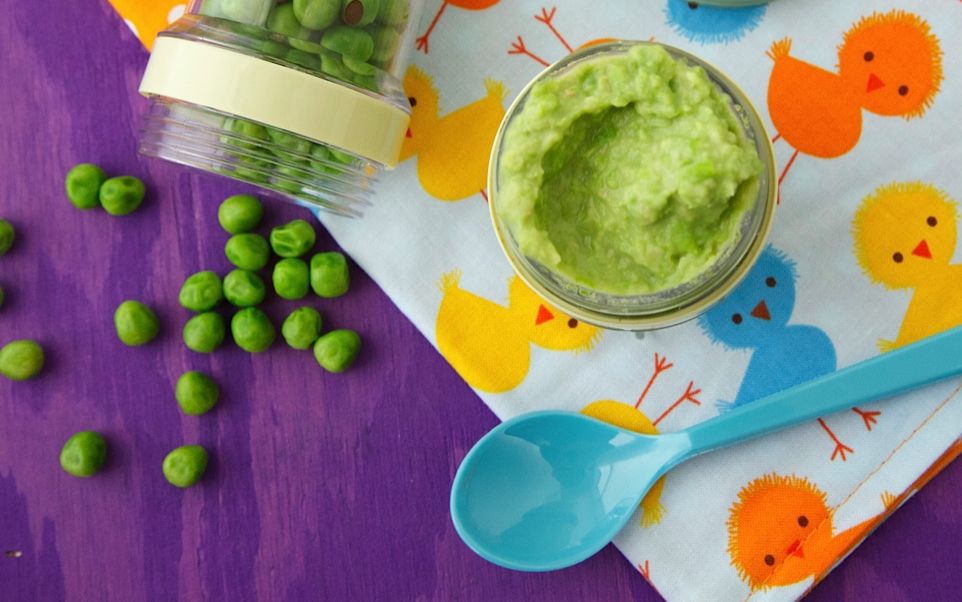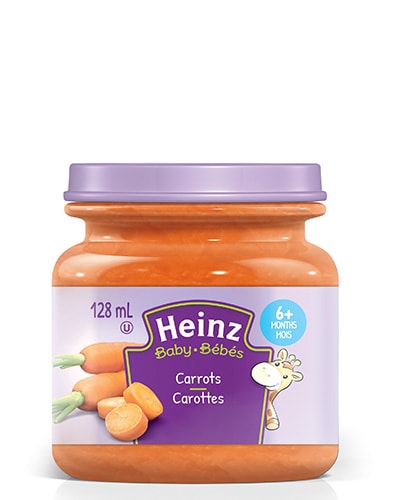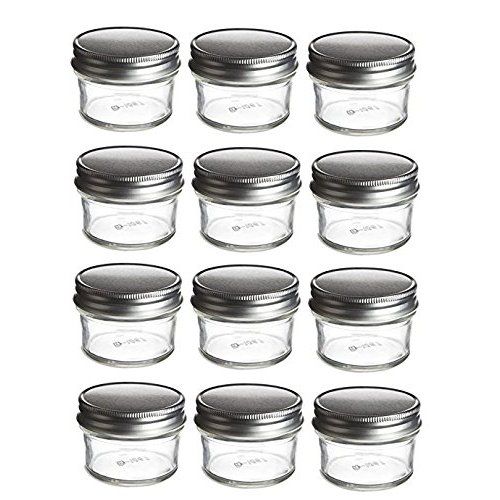Canned beans for baby food
Beans for babies: When can babies eat beans?
Updated Oct 10, 2022
Beans are a staple in the diets of many people around the world and have been for years. From refried beans in Mexico to hearty soups in Italy, beans are versatile, widely available, and easy to prepare. And yes, your baby can enjoy beans too! This article will highlight when to serve babies beans, their health benefits, and how to serve them.
IN THIS ARTICLE
Can babies have beans?
Are beans healthy for babies?
When can babies eat beans?
How to introduce beans to your baby
Are beans a common allergen?
Are beans a choking hazard?
Beans for babies FAQ
Can babies have beans?
Yes! Babies can begin eating beans when they start solid foods around 6 months of age. Make sure all beans are cooked well and have a soft texture. Both dry beans and canned beans can be made for babies. If using canned beans, choose a low-sodium variety if possible and rinse well before serving.
Are beans healthy for babies?
Beans are an incredibly nutritious food for babies! They provide fiber and plant-based protein as well as a variety of vitamins and minerals needed to support optimal growth and development. Beans are also easy-to-cook and affordable making them a great choice for busy parents.
Beans nutrients for babies
While specific nutrition information varies slightly depending on the specific type of bean, all beans are nutrient-rich. A half-cup serving of beans provides around 6 to 9 grams of protein and 5 to 10 grams of fiber. For reference, babies typically need 9 to 11 grams of protein per day and about 5+ grams of fiber per day.
Additionally, beans are iron-rich, making them ideal for babies around 6 months. At this age, babies start to need dietary sources of iron to properly grow. Beans also provide important minerals such as potassium, phosphorus, and magnesium as well as B vitamins.
At this age, babies start to need dietary sources of iron to properly grow. Beans also provide important minerals such as potassium, phosphorus, and magnesium as well as B vitamins.
When can babies eat beans?
Can babies between 6 to 9 months old eat beans?
Babies between 6 to 9 months can eat beans of all types. If using canned beans, try to purchase low-sodium. Make sure they are well-cooked and soft before serving to your baby. Squish gently between your fingers for baby-led weaning or mashed up as a puree at this age.
Can babies between 9 and 12 months old eat beans?
Yes — babies 9 - 12 months old can continue to eat beans. Continue to opt for soft, well-cooked, low-sodium varieties. Beans make a great finger food at this age once the pincer grasp is established.
Can babies over 12 months old eat beans?
Definitely! Babies over 12 months old can eat beans and may begin to enjoy more mixed dishes at this age.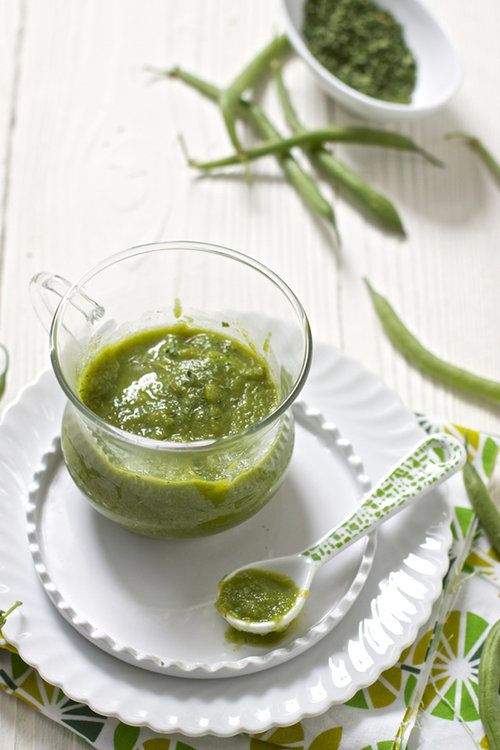 Think red beans and rice, soups, or chilis. Many babies enjoy dipping foods like pretzels or veggies into hummus or other bean dips.
Think red beans and rice, soups, or chilis. Many babies enjoy dipping foods like pretzels or veggies into hummus or other bean dips.
How to introduce beans to your baby
Beans can be eaten in a lot of different ways! They can be prepared on their own, mixed into soups or salads, or made into dips. Your baby can enjoy beans as long as they are prepared appropriately for the age and feeding level.
Serving beans for baby-led weaning
Beans are easy to incorporate into baby-led weaning. Try gently squishing them between your fingers to make them easier to pick up. They can also be served in hummus or another bean dip by spreading it thinly on toast or a cracker.
Serving as a puree
Beans are naturally soft so it’s simple to turn them into a puree. You can make a thin puree by blending beans or a thicker puree by mashing with a fork. Add water, olive oil, or melted butter to help thin out the texture if desired.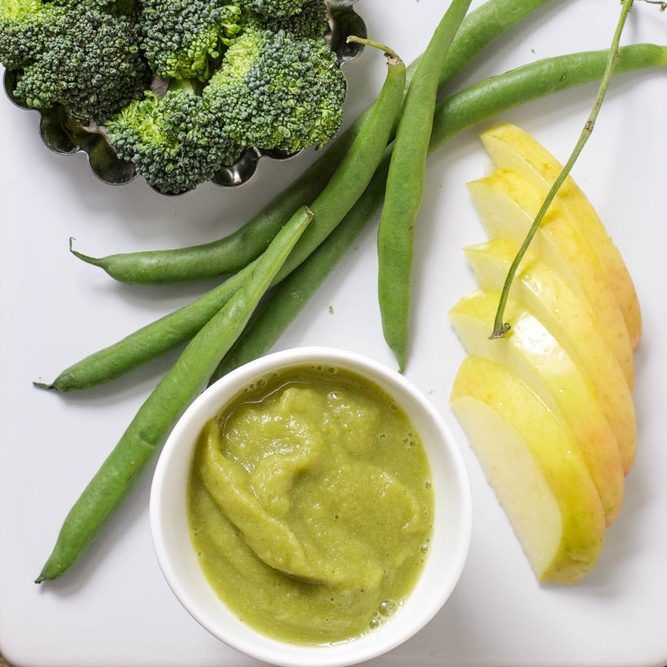
Recipe idea for beans for babies
You can serve beans in a lot of different ways, including in any recipes your family already enjoys! If you are looking for some ideas, check out this 5-minute bean puree recipe or whip up a batch of these PBJ baby-led weaning muffins (they’re made with chickpeas!).
Are beans a common allergen?
Beans are not one of the common allergens, although peanuts—another legume—are. However, eating beans may cause digestive side effects such as gas or bloating in some babies due to their high fiber and oligosaccharide (a type of carbohydrate) content. If you notice your baby seems uncomfortable after consuming beans, try reducing the portion served or serving them less often. As always, if you have any concerns, contact your pediatrician.
Are beans a choking hazard?
Beans are not considered a high-risk choking food, but it’s always important to serve food in a safe and appropriate way. Since some beans have a spherical shape, it’s recommended to lightly squeeze or mash them before serving. Additionally, ensure all beans are soft before serving. When making a puree or dip, it may be helpful to check for large pieces of skin which may be hard to chew for a new eater.
Since some beans have a spherical shape, it’s recommended to lightly squeeze or mash them before serving. Additionally, ensure all beans are soft before serving. When making a puree or dip, it may be helpful to check for large pieces of skin which may be hard to chew for a new eater.
Beans for babies FAQ
Q: Can I give beans as a first food?
A:
Yes - beans make a great first food! They are easy-to-prepare, can be eaten in many ways and are affordable. They are also good sources of protein, fiber and iron.
Q: Can babies eat beans every day?
A:
Babies can eat beans every day, especially since there are so many different varieties.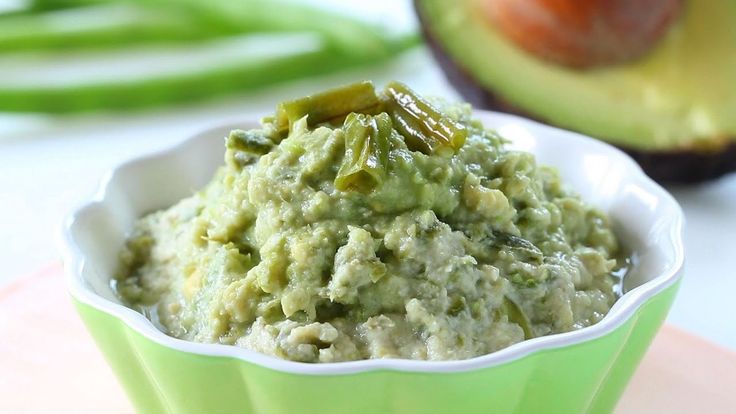 Watch out for any signs of digestive discomfort (gas or bloating) if you serve beans often. Also, remember the goal is always to serve as large of a variety of foods as possible.
Watch out for any signs of digestive discomfort (gas or bloating) if you serve beans often. Also, remember the goal is always to serve as large of a variety of foods as possible.
Q: Can toddlers eat beans?
A:
Toddlers can definitely eat beans! Beans provide much needed protein and fiber in a toddler’s diet. Many toddlers enjoy bean dips such as hummus.
Q: Are beans bad for babies/toddlers?
A:
No beans are not bad for babies and toddlers. In fact, beans are healthy and nutritious additions to the diet. They provide plant-based protein, fiber as well as vitamins and minerals.
Q: Do beans cause constipation?
A:
Beans typically do not cause constipation and can actually help to prevent and relieve constipation due to their fiber content.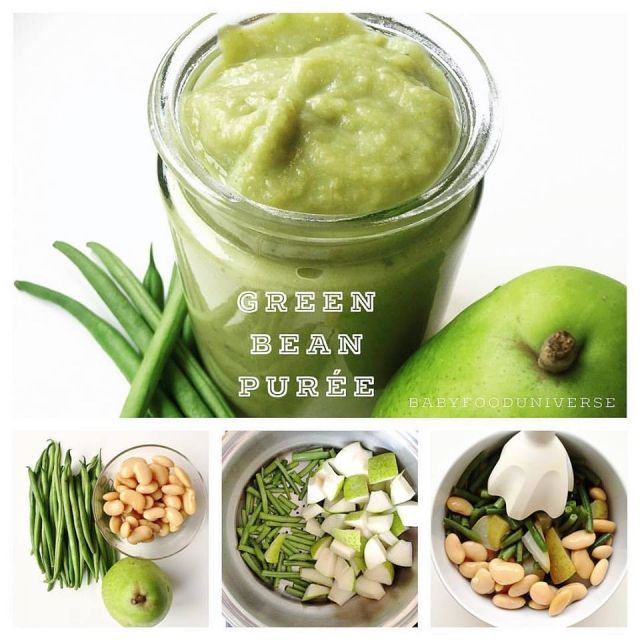
Beans for Babies | Bean Institute
Beginning the transition from breast milk or formula feeding to solid foods is an interesting and important time in a child’s development, one that may impact lifelong eating habits. Children gain many skills as they learn to eat solid foods, and parents sometimes struggle to know if and when their child is ready to try new foods, and how best to do so.
Establishing a positive experience with a variety of healthful foods is important, and research shows that creating an early preference towards healthful foods may continue throughout childhood, adolescence, and even into adulthood.
Beans: A Uniquely Nutritious Food
Beans are a plant-based food that provide key nutrients for a growing child, including protein, fiber, folate, magnesium, iron, and potassium. Because of their well-rounded combination of nutrients, beans were called out by the 2010 Dietary Guidelines for Americans as a “unique food,” one that can be considered both a vegetable and a protein food.
Is Your Child Ready for Solid Foods?
It’s important to remember that readiness for solid foods is less about age and more about a child’s abilities. How will you know when to begin the transition to solid foods? As a general rule of thumb, your baby is ready for solid foods when he or she displays the following behaviors. This typically happens around 6 months but may be earlier or later.
- Can sit up, alone or with support
- Lifts and supports head
- Mouths or chews on fingers and toys
- Opens mouth when he or she sees something coming
- Turns head away if he or she doesn’t want it
- Keeps tongue flat and low to accept a spoon
- Closes lips over the spoon and scrapes food from the spoon with lips
- Keeps the food in his or her mouth
First Foods Schedule
When to introduce foods and the order of introduction is a science, and it’s important to introduce foods in the right order for developmental and nutrition reasons.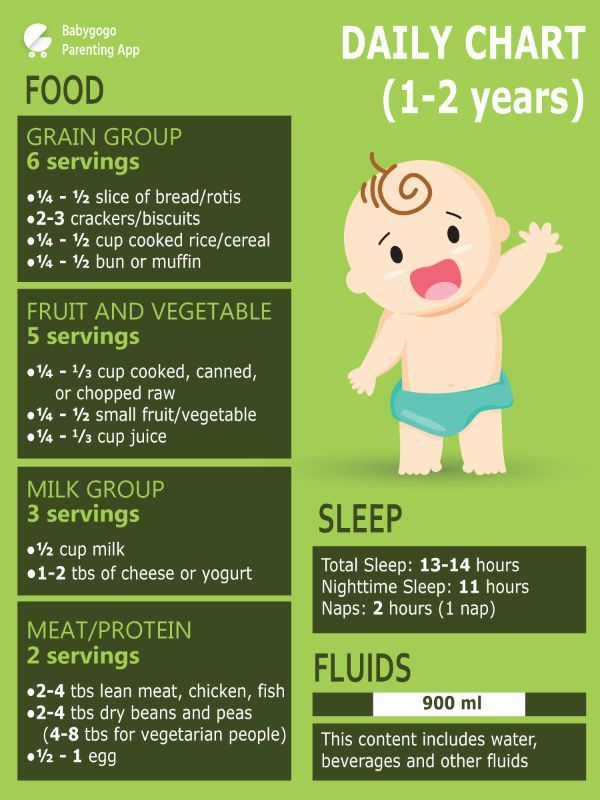 Only introduce one new, single ingredient food to your baby every five days. This allows you to see any negative reactions your child might have to a new food, such as an allergic rash.
Only introduce one new, single ingredient food to your baby every five days. This allows you to see any negative reactions your child might have to a new food, such as an allergic rash.
First Food: Iron-fortified Baby Cereal
Cereal is an excellent first choice because it’s easy to digest. The consistency can vary depending on the amount of liquid added. Mix the cereal with formula or breast milk. Start with thin cereal and as the baby becomes a better eater, thicken it up, eventually to the point of having chunks to encourage mouth development. Learning to eat cereal and to master a spoon can take a month or more!
Next Up:Mashed or Pureed Fruits & Vegetables
After a baby has enjoyed eating thick or even lumpy cereal, it is time to introduce fruits and vegetables. When introducing new foods, do so one at a time, allowing your baby an opportunity to experience and become familiar with the new taste and texture. Introduce 1 to 2 tablespoons of a new fruit or vegetable, along with the grain cereal, but not mixed.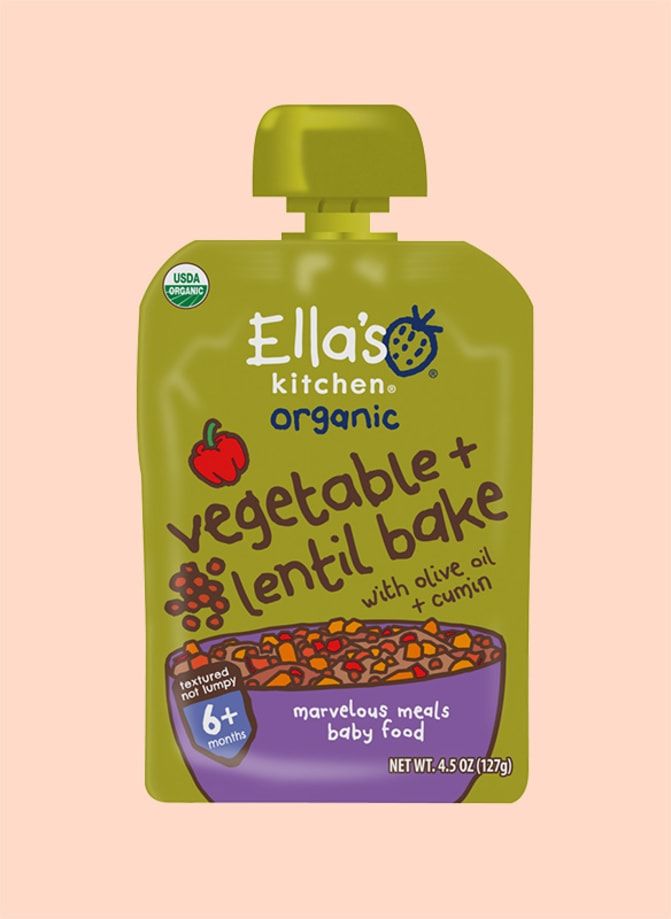 New fruits and vegetables should be well cooked, mashed, or pureed to a smooth consistency to start. You can transition to more texture as your child becomes a better eater.
New fruits and vegetables should be well cooked, mashed, or pureed to a smooth consistency to start. You can transition to more texture as your child becomes a better eater.
When to Introduce Beans
Your child will be ready to try cooked, mashed beans when you see some of the following signs, likely at 7 to 10 months of age.
- Sits alone
- Bites off food
- Chews with rotary motion and moves food side-to-side in mouth
- Begins curving lip around cup
- Hand grasp changing from palmar to pincer grasp (thumb to index finger)
Should I give my baby beans I’ve cooked from the dry form or canned beans?
Cooked dried beans are preferred, as they contain no sodium. If using canned beans, choose a low-sodium variety, and be sure to drain and rinse the beans to remove excess sodium. Rinsing can remove about 40% of the added sodium. Two tablespoons of low-sodium, canned pinto beans, after rinsing, contain about 20 milligrams of sodium.
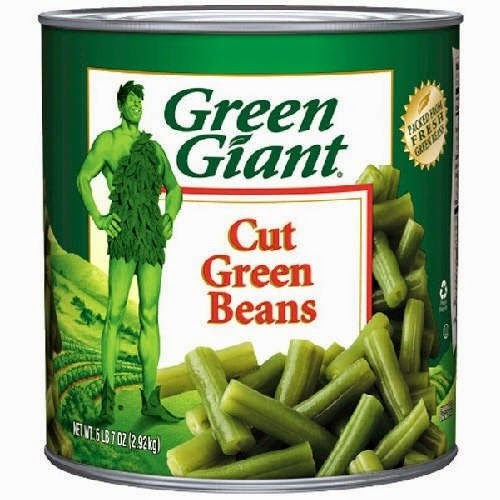
How to Introduce Beans
- Start by introducing your child to 1 to 2 tablespoons of cooked, mashed beans. Mash the beans to the consistency he or she can handle and enjoys. If your child likes more texture, simply use a fork or potato masher and leave the beans chunky. If your child prefers smoother textures, a food processor will work well.
- Introduce beans for the first time when your baby isn’t full but not starving. Provide a little breast milk or formula (about half of what he or she would normally eat in a sitting), and then introduce the beans. If your baby is too hungry, she may be frustrated she’s not getting food fast enough. If she’s full, she may not be interested. This is a good rule of thumb for introducing any new solid food.
- Don’t introduce beans when your baby is tired, cranky, or sick. It’s best to introduce a new food when a baby is well rested and happy!
- If at first you don’t succeed, keep trying.Children eat what they like, and like what they know.
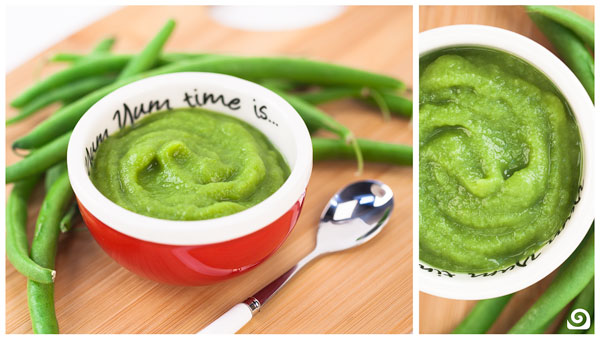 You must give a child time and opportunities to learn if he or she likes or does not like a particular food.
You must give a child time and opportunities to learn if he or she likes or does not like a particular food. - If your baby refuses, don’t force it. Pressuring a child to eat when he doesn’t want to may disrupt his internal hunger cues, and has been linked to overeating, and in some cases, a negative relationship with the forced food. It’s important to follow your baby’s lead in feeding, letting him control the amount, tempo, and to stop when he wants to stop.
Is my child’s “picky eating” something to be concerned about?
What we commonly refer to as “picky eating” is actually an innate safety mechanism for infants and toddlers as they transition from an exclusive milk/formula diet to solid foods. For much of human history, people did not know what was safe and unsafe to eat, and therefore, any new food is met with skepticism and caution until it is proven safe. Research suggests that it can between 5 to 10—possibly up to 15!—exposures to a new food before it may be accepted and preferred.
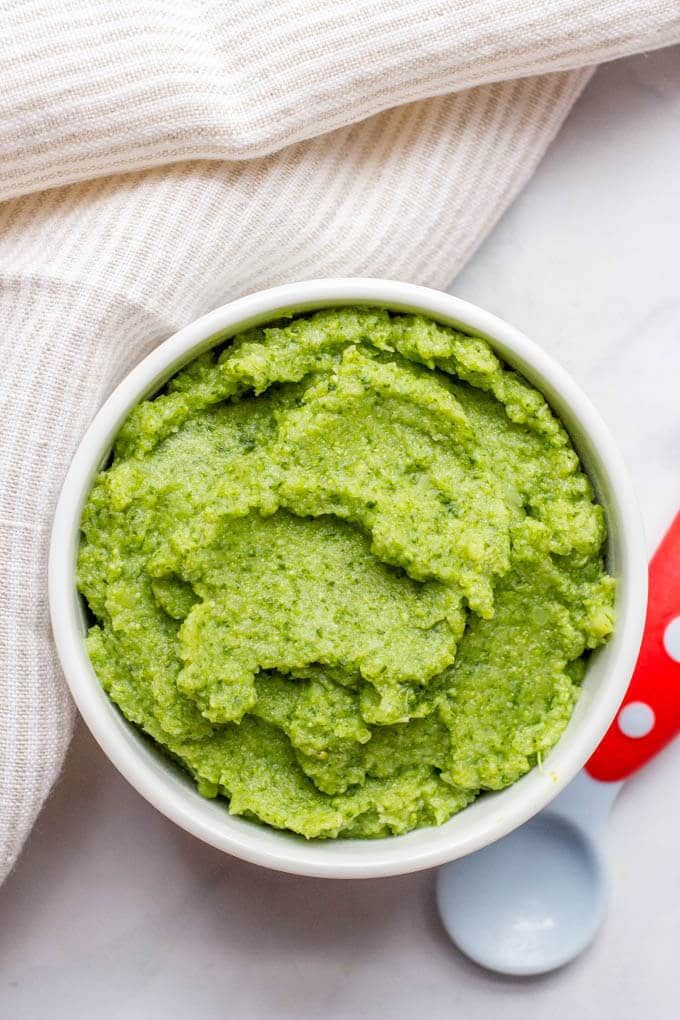
What About Portion Size? How Much Does My Child Need?
Portion sizes for young people are quite different than adult portions. Ellyn Satter, Registered Dietitian and international children’s feeding expert has provided this helpful chart to know what portion sizes children often eat. Keep in mind that these are general guidelines to help you understand how much a child might take or eat. Satter in no way intends the guidelines to be used for restricting a child’s portion sizes or trying to get him or her to eat more than he or she wants. Satter points out that children know how much they need to eat. To support them in eating as much or little as they need and growing in the way that is right for them, follow Satter’s Division of Responsibility in Feeding: Parents are responsible for the what,when, and where of feeding and children are responsible for the how much and whether of eating. For more information, see www.EllynSatterInstitute.org.
Figure 8. 2 Portion Sizes For Children 2 Portion Sizes For Children | ||||
|---|---|---|---|---|
| Food | Ages 1-3 years | Ages 3-5 years | Ages 6-8 years | Ages 8+ years |
| Cooked or canned dry beans | 1-2 Tbsp | 3-5 Tbsp | 5-8 Tbsp | ½ cup |
| Meat, poultry, fish | 1-2 Tbsp | 1 oz | 1-2 oz | 2 oz |
| Eggs | ¼ | ½ | ¾ | 1 egg |
| Pasta, rice, potatoes | 1-2 Tbsp | 3-5 Tbsp | 5-8 Tbsp | ½ cup |
| Bread | ¼ slice | ½ slice | 1 slice | 1 slice |
| Vegetables | 1-2 Tbsp | 3-5 Tbsp | 5-8 Tbsp | ½ cup |
| Fruit | 1-2 Tbsp or ¼ piece | 3-5 Tbsp or 1/3 piece | 5-8 Tbsp or ½ piece | ½ cup or 1 piece |
| Milk | 1/4 – 1/3 cup | 1/3 – ½ cup | ½ to 2/3 cup | 1 cup |
| Fats & oils | To appetite | To appetite | To appetite | To appetite |
Satter, EM. 2000. Child of Mine. Feeding with Love and Good Sense, Page 339. Boulder, CO. Bull Publishing Company. Used with permission from the author.
2000. Child of Mine. Feeding with Love and Good Sense, Page 339. Boulder, CO. Bull Publishing Company. Used with permission from the author.
Making Family Meal a Time Where Healthful Eating is Practiced and Enjoyed by All Family Members
Family meals are a great place to encourage everyone in the family to eat a healthful diet. The Dietary Guidelines for Americans recommends all people ages 2 and older eat between 1 to 3 cups of beans per week. Serving beans at most meals and having young children eat along with the family is a great way to encourage healthful eating for your child, as well as the entire family.
Research has found many benefits to regular family meals including the development of healthful eating patterns, increased nutrient intake, and decreased likelihood of being overweight. Modeling good eating behaviors, communicating positively about food, and creating a positive context for healthful foods will be beneficial for your baby and the entire family.
References
Birch LL, McPhee L, Shoba BC, Pirok E, Steinberg L. 1987. What kind of exposure reduces children’s food neophobia? Appetite 9:171–78
Birch, L.L, Fisher, J.O., and Davison, K.K. (2003). Learning to overeat: Maternal use of restrictive feeding practices promotes girls’ eating in the absence of hunger. American Journal of Clinical Nutrition. 28: 215-220.
McCray, V., Harris, V.W., and Gillen, M. (2013). Benefits of Family Meals. Retrieved from http://edis.ifas.ufl.edu/fy1362 January 29, 2015.
Nicklaus, S., Boggio, V., Chabanet, C., and Issanchlou, S. (2004). A prospective study of food preferences in childhood. Food Quality and Preference. 15: 805-818.
Nu, T., MacLeod, J., and Barthelemy, J. (1996). Effects of age and gender on adolescents’ food habits and preferences. Food Quality and Preference. 7: 251-262.
Satter, EM. 2000. (p.g. 250-251). Child of Mine. Feeding with Love and Good Sense. Boulder, CO. Bull Publishing Company.
Boulder, CO. Bull Publishing Company.
Satter, EM. 2000. (p.g. 256-257) Child of Mine. Feeding with Love and Good Sense. Boulder, CO. Bull Publishing Company.
Satter, EM. 2000. (p.g. 339) Child of Mine. Feeding with Love and Good Sense. Boulder, CO. Bull Publishing Company.
Skinner, J.D., Carrut, B.R., Wendy, B., and Ziegler, P.J. (2002). Children’s food preferences: a longitudinal analysis. Journal of the American Dietetic Association. 102: 1638-1647.
United States Department of Agriculture. Dietary Guidelines for Americans, 2010. Washington, DC: U.S. Department of Health and Human Services; 2010.
United States Department of Agriculture. Feeding Your Baby in the First Year. Retrieved from http://wicworks.nal.usda.gov/wicworks/Topics/infantfeedingtipsheet.pdf on February 24, 2015.
Beans in the diet of children: from what age, recipes
› ›
Beans are quite often on the menu of families. It is added to soup, salads, side dishes. Parents of young children have a question: “When can a child have beans, which and in what form?”. I answer all your questions.
Green beans for children from 7 months
Contents
- Complementary beans from 7 months to 3 years
- How to prepare patch beans for babies
- Red or white beans for children from 3 years old
- The benefits of beans for children
- The norm of consumption of beans
- Popular dishes made of beans
The first time, infants are familiar 8 months when parents feed them mashed vegetables from a jar. Ready-made dish of green beans, potatoes and meat. Such a multi-component puree can be given up to 2 years, adding vegetable stew as an ingredient. Red beans belong to the solid food of the legume family. It is advisable to give it in a wiped form up to 3 years. Can be included in soups, vegetable stews. Use canned beans in cooking for children over 4 years old. After a year, you can not buy mashed potatoes, but cook soup-puree from green beans on your own. A child from 1 year old can easily digest this type of food. nine0003
Use canned beans in cooking for children over 4 years old. After a year, you can not buy mashed potatoes, but cook soup-puree from green beans on your own. A child from 1 year old can easily digest this type of food. nine0003
Red bean soup for kids
Vegetables for kids
How to cook green beans for babies
- Soak green beans for 10-15 minutes in cold water.
- Boil the pods in a saucepan until tender, without closing the lid.
- Blend the cooked beans in a blender.
- We give 30 grams for the first time. If there is no bloating, the portion can be increased.
- Cooking beans for a child no more than once a week. nine0016
Red or white beans for children over 3 years old
Soak red or white beans in cold water for 3 hours. Boil in a large volume of water, without covering the pan with a lid. When ready, add salt. Then soup can be made from boiled beans. He will be more poignant. Grind the beans, it turns out mashed potatoes, you can make pate, stew. Up to 5 years, beans are only boiled or baked. After that, you can lightly fry the legumes with onions.
Up to 5 years, beans are only boiled or baked. After that, you can lightly fry the legumes with onions.
Introducing pea soup to a child
Benefits of beans for children
- A source of protein similar to meat and milk. It is not inferior to meat dishes in quality and quantity.
- Beans contain rare vitamins D and E, the lack of which has to be compensated by the inclusion of multivitamins.
- Beans are a dietary product. Approved for use in the presence of chronic diseases.
- Beans normalize blood sugar levels, remove excess fluid from the body, and prevent viral diseases. nine0016
- Beans contain phosphorus, which is responsible for healthy teeth and bones. Calcium, thanks to which healthy hair and nails grow.
Bean intake
- Baby gets ¼ teaspoon of bean puree for the first time.
- Up to a year, we increase the volume of the dish up to 50 grams.
- After 3 years can be given in a single serving up to 100 grams.
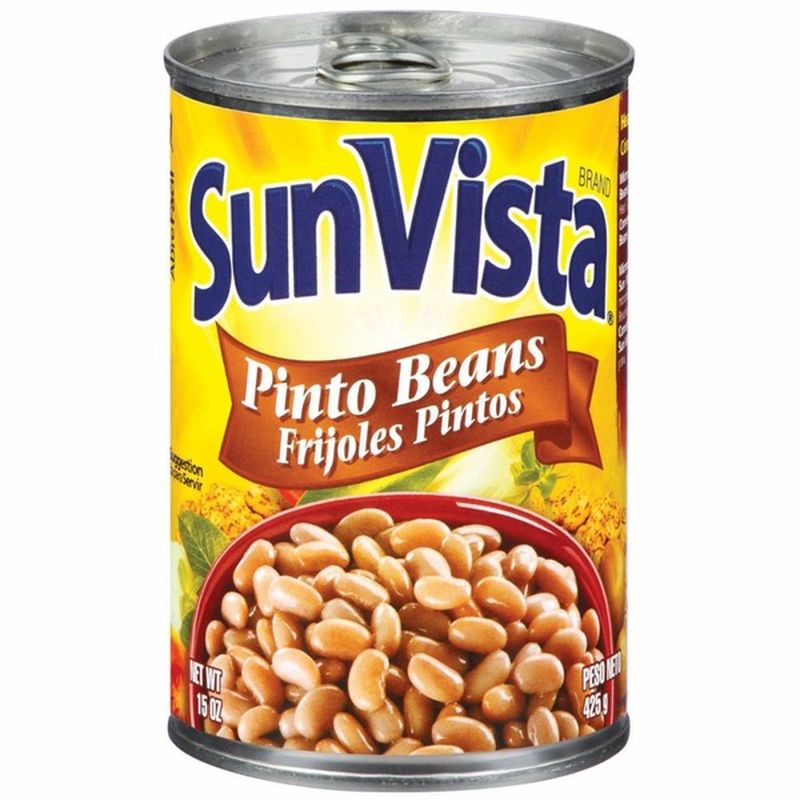
- The norm of eating beans is 1-2 times a week.
Beans tastes great with carrots, cauliflower, onions. Perfect as a side dish for any meat dish. nine0003
Popular bean dishes
Puree soup
- 150 grams of beans.
- 1 bulb.
- 15 grams vegetable oil.
- 10 grams of flour.
- Greens to taste.
Cook beans until tender. In a frying pan, simmer the onion in vegetable oil, add flour. Mix the fried onions with beans. Whisk the mixture in a blender. Boil in a saucepan for 5 minutes until pureed. We decorate with greenery. Soup puree is ready. nine0101 Vegetable stew with beans and chicken
- 250 grams of chicken fillet.
- 75 grams of beans.
- 1 bulb.
- 1 carrot.
- 150 grams of cabbage.
- 25 grams of olive oil.
Boil the beans. Simmer chicken fillet, onion, carrots, cabbage in a pan. When ready, add boiled beans, salt, after 5 minutes remove the pan.
Share with friends:
Author: Bychkova Veronika
Canned beans: no additives or preservatives
/ All materials
Test results
Microorganisms will not pass!
All samples we have selected are classified as sterilized canned food. That is, the beans are in a sealed container, heated to a temperature at which the microflora dies, in particular, bacterial spores. Beans, like other canned food, must meet the requirements of industrial sterility.
A complex of studies was carried out, including the thermostating of canned food and the determination after it of spore-forming and non-spore-forming aerobic and anaerobic microorganisms, including lactic acid, mold fungi and yeast. Tests have shown that all samples meet the requirements of industrial sterility. nine0003
Impurities and preservatives do not belong in canned food
The fact that preservatives are often added to canned food is a myth. However, the experts checked for their presence in the six samples tested. And neither benzoic nor sorbic acid, nor their salts were found there. That is, you don’t have to worry about the presence of preservatives in this context.
However, the experts checked for their presence in the six samples tested. And neither benzoic nor sorbic acid, nor their salts were found there. That is, you don’t have to worry about the presence of preservatives in this context.
Also, there was no place for impurities in the beans - both vegetable and foreign.
Tasty and beautiful
For this remark, the sample "Self-assembled tablecloth" is included in the list of goods with comments. nine0003
Andrey Bobrovsky, dietitian, psychotherapist, PhD:
Canned beans retain most of the benefits of fresh beans. Conservation is a method that our ancestors used, and modern technologies make it possible to save most of the useful properties.
Like all legumes, it is a good source of fiber and protein. If for some reason, for example, due to fasting, there is no animal protein in a person’s diet, it is necessary to add legumes to the diet, the protein of which is almost similar to an animal. nine0153
nine0153
I will list just some of the useful properties of beans: they contain vitamins, phytosterols, and are a source of trace elements and minerals. It also contains resistant starch, which helps regulate cholesterol and blood glucose levels.
Another advantage of beans is the variety of flavors that can be prepared from them. It allows you to diversify the diet even in the presence of any dietary restrictions.
March 09, 2017
Advertising
Advertising
The name of the Contactor organization
Contact person
Position
Phone
E-mail
Name Systems of independent quality control "Roskontrol".
Product name
Product category
Brand
EAN code
Production information
Main characteristics
Product photo
×
Tariff
You have selected subscription level Free .